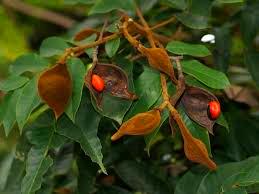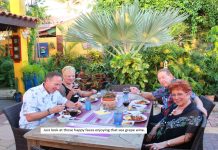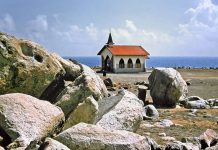The difference between Ormosia coccinea (known as ‘Huayruru’) and Abrus precatorious, known in Aruba as ‘Bonchi Hojada’, is that 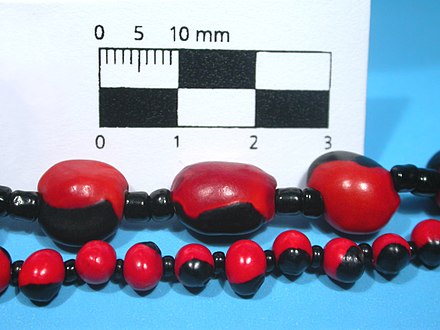
Ormosia coccinea or huayruro is the largest seed in the graph and Abrus precatorius or bonchi hojada is the little one.
The Huayruro seeds are used for newborn babies and young children as amulets as a protection against bad spirits. They are put around their hands since they are unable to remove them and take them to their mouth. As soon as they begin to grow these are removed and stored in a place outside their reach. Huayruro seeds used on the body are harmless and do not cause contact poisoning or proven allergies.
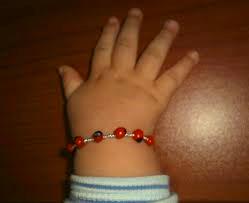
2- huayruro baby bracelet
Ormosia coccinea is a plant that grows throughout South Eastern North American countries, and all throughout South America. It produces beautiful red seeds with one black spot covering one-third of its surface. These seeds are used for jewelry and other decorative purposes. The seeds are poisonous if eaten.
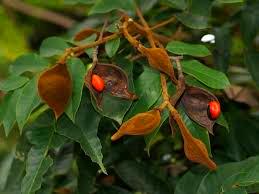
3- (Huayruru) Ormosia coccinea
The seeds are known as Wayruru Aymara also spelled huayruro, huayruru, in Peru where villagers believe them to be powerful good luck charms and nene or chumico in Costa Rica. A name also known in the French American colonies is panacoco, but this more often applies to Swartzia tormentosa, another plant carrying these kinds of red and black seed.
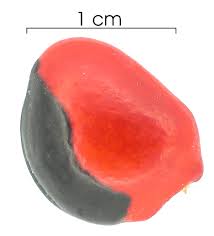 4- Huayruro size
4- Huayruro size 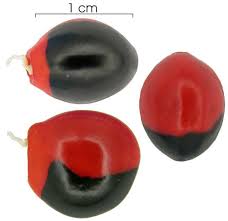
If you are concerned regarding origin, you can may take them to an ethnobiologist for verification.
If you believe your seeds are Ormosia coccinea you have been given a good luck charm with no ill intention, as long as you don’t eat your good luck charm seeds (warn others and keep away from the kids or your pets). The research seems to suggest they are just beautiful adornments.
Aruba has its Abrus precatorious or Bonchi Hojada.
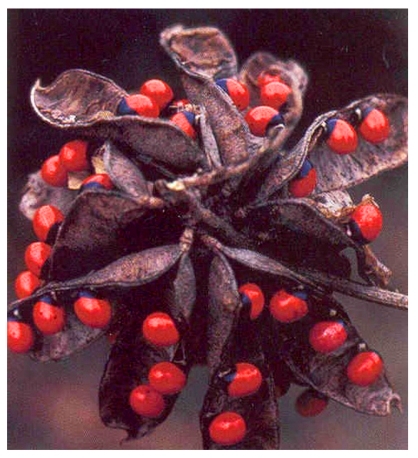
5- (Bonchi Hojada) Abrus precatorious
Abrus precatorius is a vine native to India and other tropical and subtropical areas of the world, it is a slender, perennial climber with long, pinnate-leafleted leaves that twines around trees, shrubs, and hedges. Since introduction to Florida and the Caribbean, it is now commonly found throughout these areas and in the southern United States. It is known by a variety of names, including jequirity bean, rosary pea, and prayer bead, crab’s eye, and love bean. The vine has pods with oval seeds and a hard glossy shell. The seeds vary in color, from red, black, orange or white with black and white centers). While all parts of the plant are toxic, the highest concentrations are found in the seeds. Due to their appearance, the seeds are often used for jewelry, beadwork and ornaments.
Abrus precatorius is a poisonous plant which contains one of the most lethal toxins, Abrin, a toxalbumin that inhibits protein synthesis causing cell death. The seeds are crushed and taken orally for suicidal purpose. There is no antidote for this poisoning.
If you believe your seeds are from Abrus precatorious, wrap them WITHOUT TOUCHING. Label them and add poisonous do not to touch or eat. Don’t leave them lying around to sort another day. The Rosary pea is very aesthetically pleasing, and for this reason it is made into jewelry by various cultures. Unfortunately some jewelry makers have died by pricking their fingers during this process. Yup, the rosary pea is probably the world’s most toxic seed. While intact, the seeds are mostly harmless (if I can use that word), but once the outer coating is scratched or the seed is crushed, as little as 0.1–1 µg/kg can kill a human.
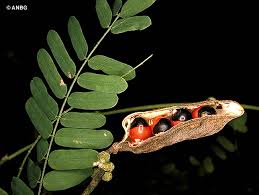
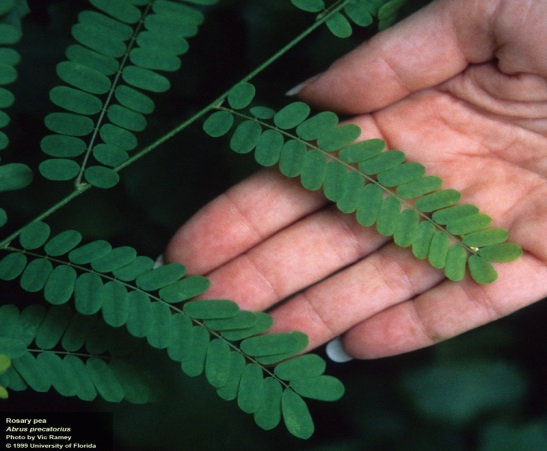
6- (Bonchi Hojada) Abrus precatorious: leaves and seeds
Abrus precatorious causes total bodily system shut down. For this reason, the collection needed warning labels, labelled them with easy to see toxic warning stickers and have written a safety data sheet on how to handle them (never without gloves and avoid touching your face!)
While these beans do contain a poison, it is extremely unlikely that an individual would chew through the hard shell of the seed and ingest the Abrin. Jequirity beans are not particularly harmful in their natural state and the seeds are not expected to cause serious problems if swallowed whole and not chewed.
There have been no reported cases of poisonings from the bracelets but ingestion of any quantity of chewed, crushed or drilled (e.g. from a necklace) beans should be regarded serious and anyone who is suspected of ingesting them should seek medical advice immediately.
If you think you are in possession of the jequirity bean bracelets it is recommended that your return them to the supplier. If this is not possible then you should bag the bracelets and dispose of through normal household waste. In line with good hand hygiene practices, and as an additional precaution, you should also wash your hands and avoid touching your eyes after bagging.
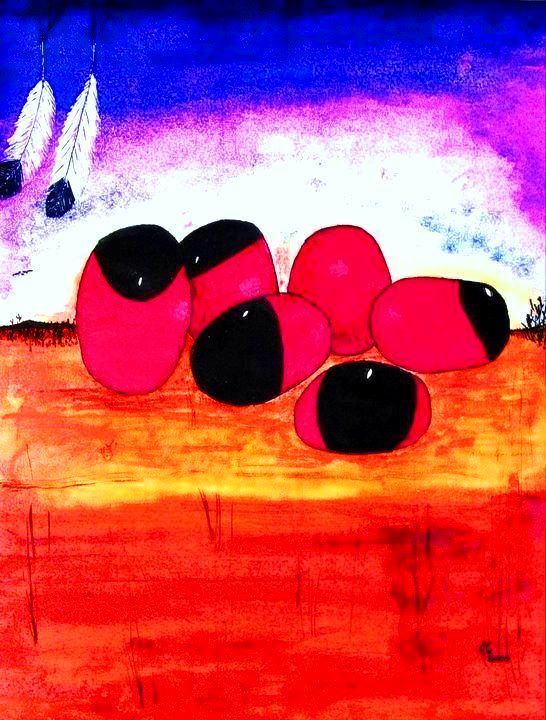
7-“Bonchi Hojada” Abstract Interpretation by Etnia Nativa
To get to know more about Aruba and its origins, its animals and culture, we highly recommend you to book your visit of our renowned cultural encounter session which has been entertaining curious participants for decades. Mail us at etnianativa03@gmail.com to confirm your participation. Our facilities and activities take place close to high rise hotels. q


